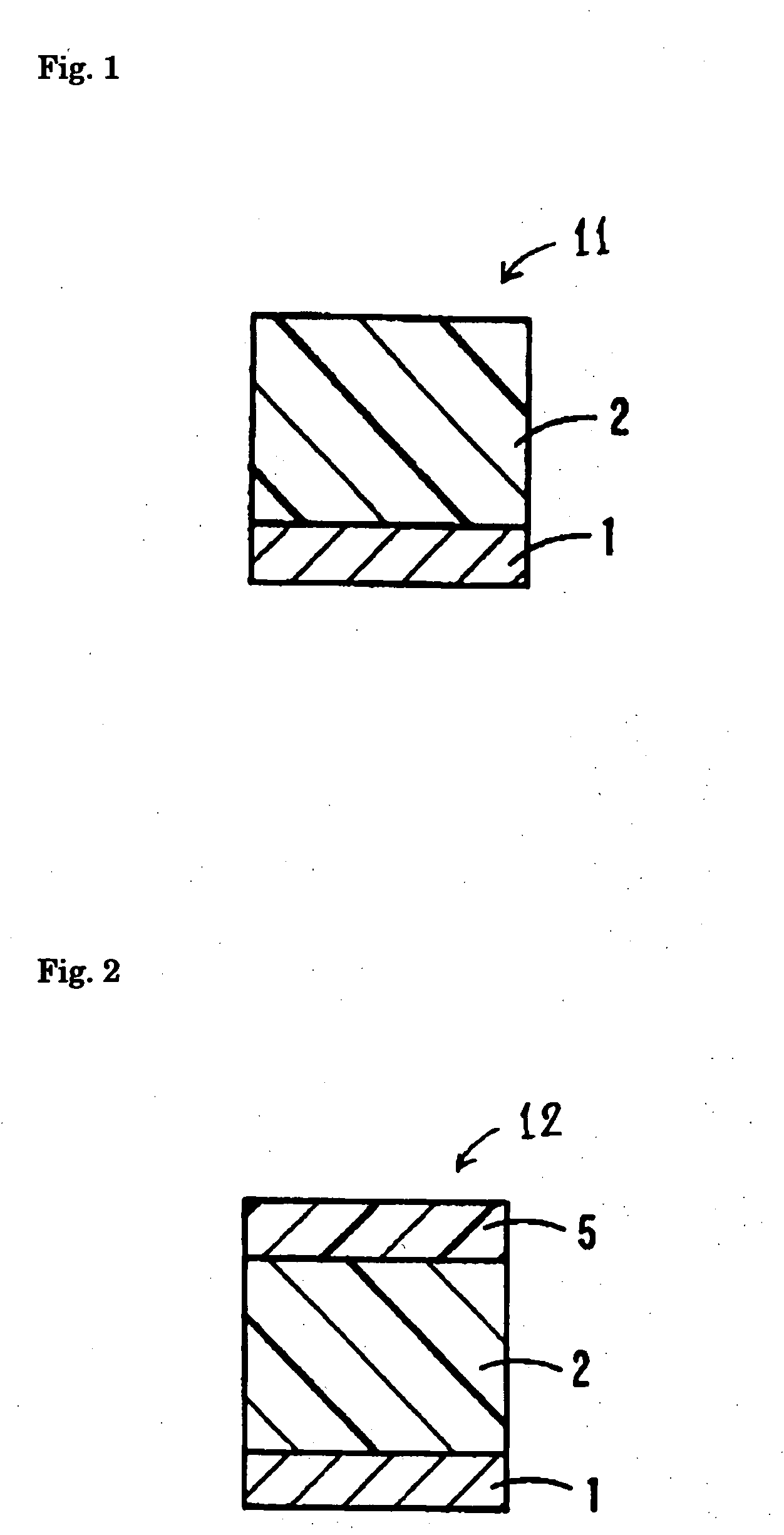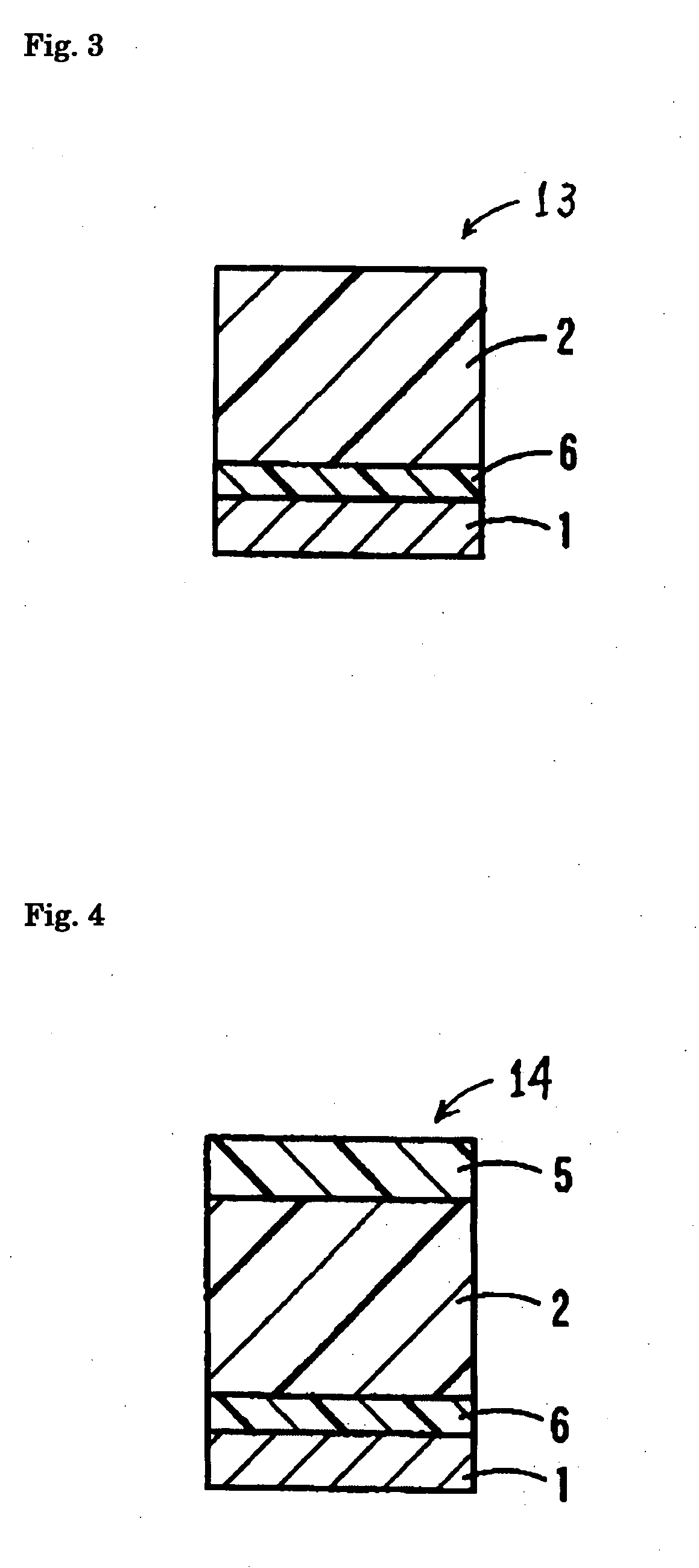Electrophotoconductor and image forming apparatus
a photoconductor and image technology, applied in the direction of electrographic process apparatus, instruments, corona discharge, etc., to achieve the effects of excellent charge transporting performance, excellent solubility and low cos
- Summary
- Abstract
- Description
- Claims
- Application Information
AI Technical Summary
Benefits of technology
Problems solved by technology
Method used
Image
Examples
production example 1
[0267]Exemplified Compound No. 1 (compound (1aa)) was manufactured in accordance with the below described response scheme.
Manufacture of Amine-Bisaldehyde Intermediate (7aa)
[0268]18.4 g (2.4 equivalents) of oxyphosphorous chloride was gradually added to 100 ml of N,N-dimethyl formamide anhydride (abbreviated as DMF) while being cooled with ice, and the mixture was stirred for approximately 30 minutes, and thus, a Vilameier reagent was prepared. 15.5 g (1.0 equivalent) of N-a-naphthyl-N-phenyl-p-toluidine (6a) was gradually added to the above described solution while being cooled with ice. After that, the mixture was gradually heated and the temperature was raised to 110° C. for reaction, and the mixture was stirred for three hours while heating so that the temperature was maintained at 110° C. After the completion of the reaction, this reacted solution was left and cooled and was gradually added to 800 ml of a cooled 4 N solution of sodium hydroxide, and then the generated precipita...
production examples 2 to 10
Syntheses of Exemplified Compounds Nos. 2, 3, 4, 7, 18, 20, 22, 23 and 57
[0279]Exactly the same operations were carried out using the respective raw material compounds shown in the following Table 2 as the amine compound, represented by general formula (6), and the Wittig reagent, represented by general formula (8a) or general formula (8b), in Production Example 1 so that Exemplified Compounds Nos. 2, 3, 4, 7, 18, 20, 22, 23 and 57 were respectively manufactured. Here, Table 2 shows the raw material compounds of Exemplified Compound No. 1 together.
TABLE 2Amine compoundWittig reagentCompoundgeneral formula (6)general formula (8a) or (8b)Production Example 1Exemplified CompoundNo. 1Production Example 2Exemplified CompoundNo. 2Production Example 3Exemplified CompoundNo. 3Production Example 4Exemplified CompoundNo. 4Production Example 5Exemplified CompoundNo. 7Production Example 6Exemplified CompoundNo. 18Production Example 7Exemplified CompoundNo. 20Production Example 8Exemplified Comp...
production example 11
Synthesis of Symmetric Bishydroxy Enamine Compound for Comparison
[0281]4.21 g of a symmetric bishydroxy enamine compound, represented by the following chemical structure formula (13) (hereinafter referred to as “Symmetric bishydroxy enamine compound (11)”) which is Exemplified Compound (EA-14) described in Example 1 of JP-A 2004-269377, was obtained in the same manner as in Production Example 1, except that 16.9 g of an enamine compound (1.0 equivalent) which is synthesized from diphenyl amine and diphenyl acetaldehyde was used as an amine compound.
[0282]The values of the element analysis of the obtained symmetric bishydroxy enamine compound (11) were as follows.
Value of Element Analysis of Symmetric Bishydroxy Enamine Compound (11)
[0283]Theoretical values: C, 86.42%; H, 5.70%; N, 2.40%;
[0284]Found values: C, 85.97%; H, 5.38%; N, 2.27%;
[0285]In addition, as the results of the analysis of the obtained symmetric bishydroxy enamine compound (11) in an LC-MS, a peak corresponding to the...
PUM
 Login to View More
Login to View More Abstract
Description
Claims
Application Information
 Login to View More
Login to View More - R&D
- Intellectual Property
- Life Sciences
- Materials
- Tech Scout
- Unparalleled Data Quality
- Higher Quality Content
- 60% Fewer Hallucinations
Browse by: Latest US Patents, China's latest patents, Technical Efficacy Thesaurus, Application Domain, Technology Topic, Popular Technical Reports.
© 2025 PatSnap. All rights reserved.Legal|Privacy policy|Modern Slavery Act Transparency Statement|Sitemap|About US| Contact US: help@patsnap.com



